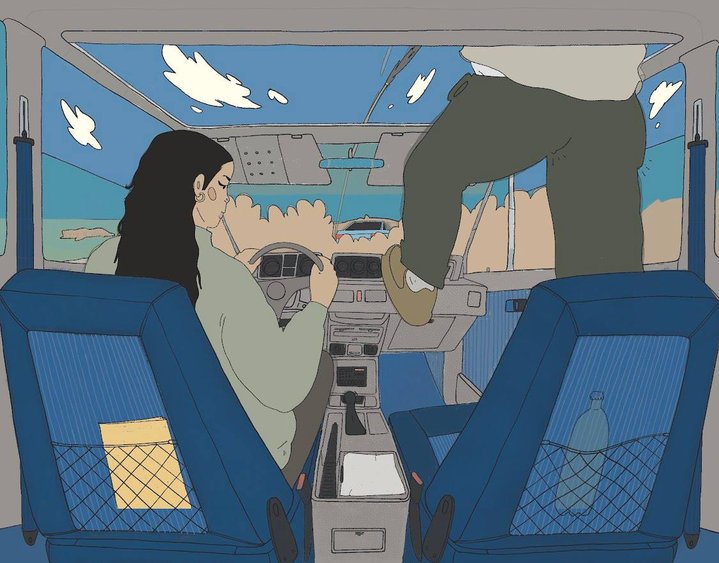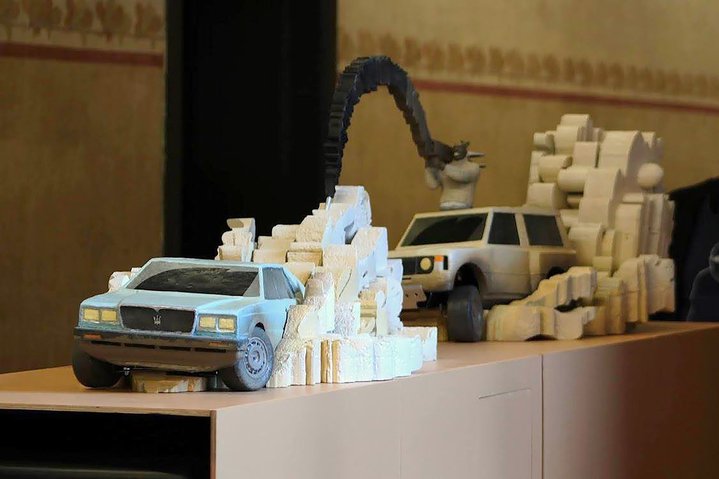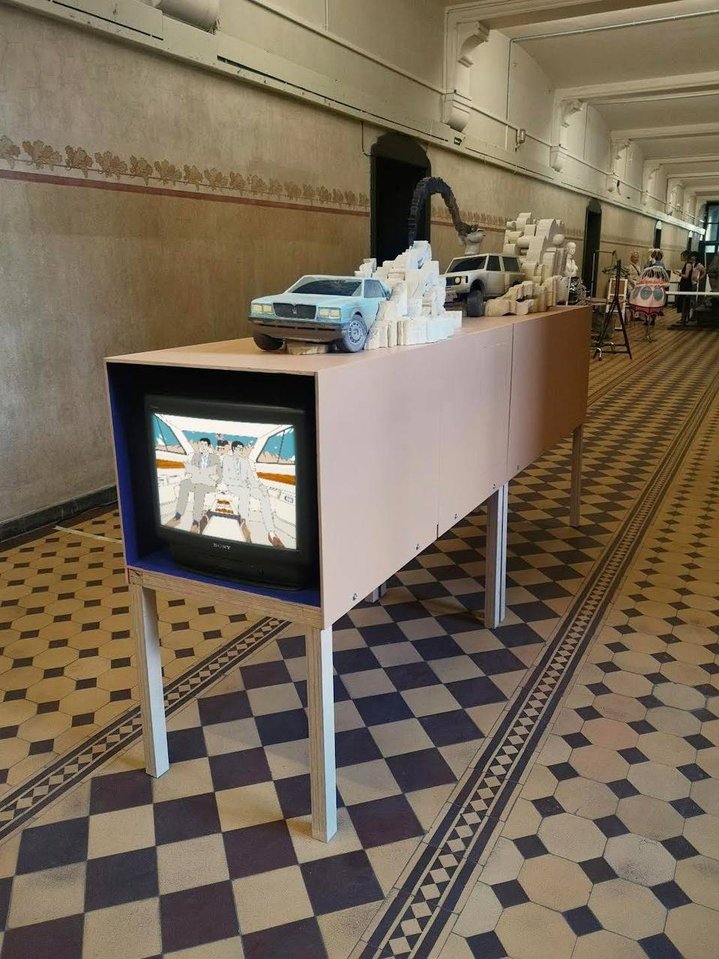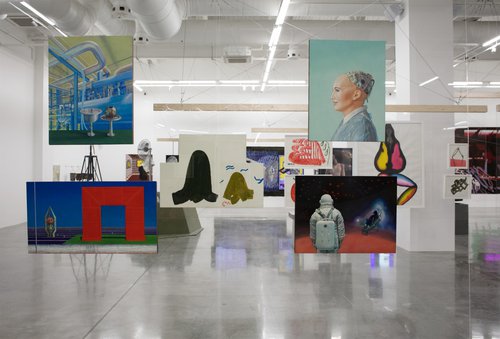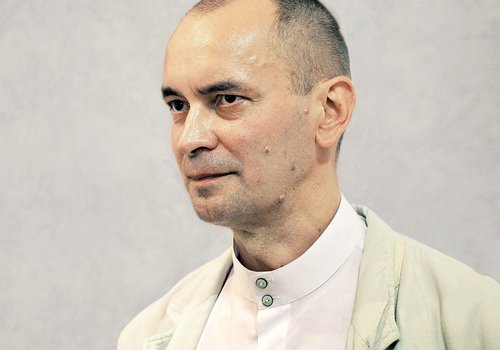Explosive art of Riga-born artist Krists Janstevics
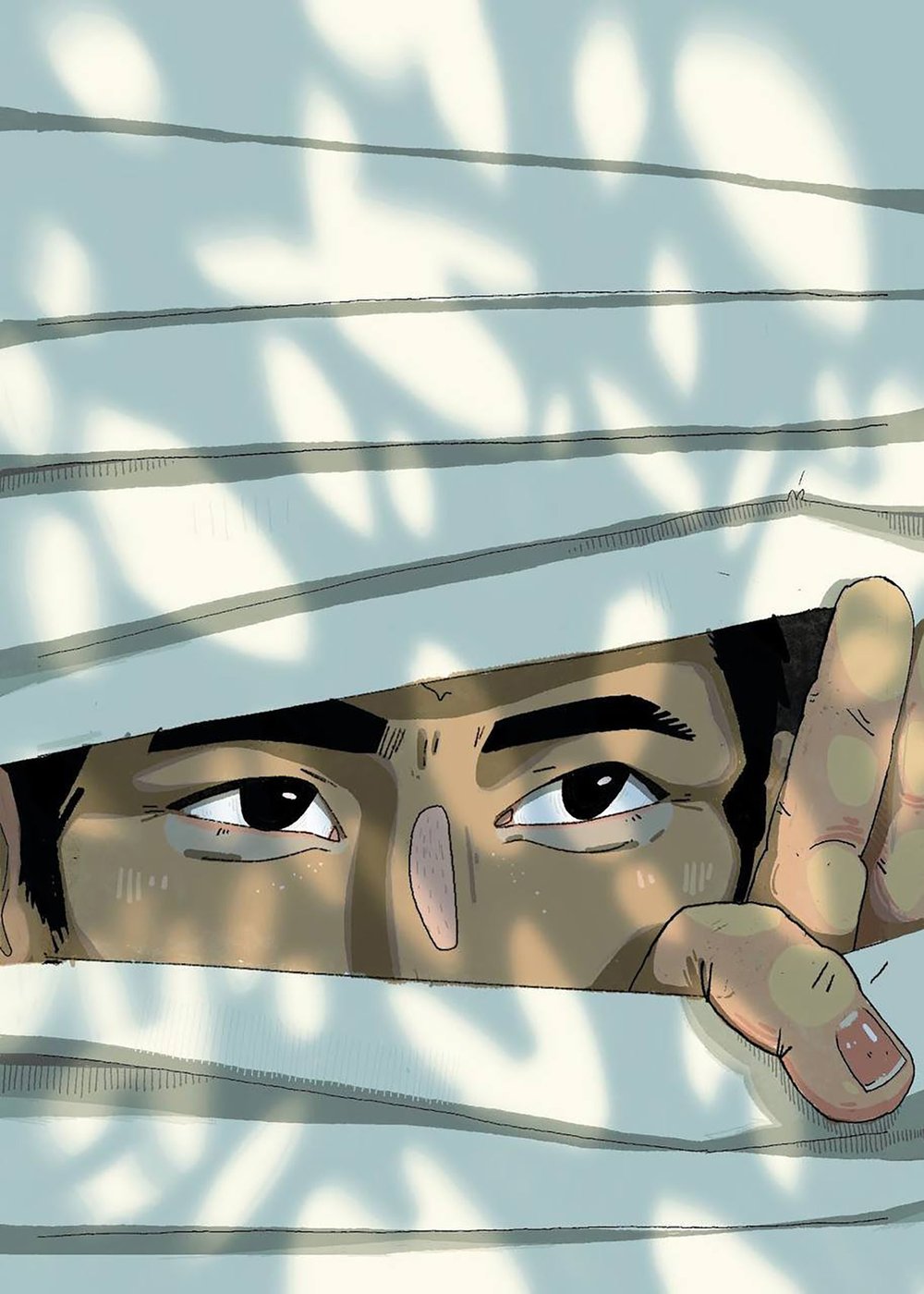
Krists Janstevics. Work from Snapshot project. Riga, 2023. Courtesy of the artist and Maxim Boxer Gallery
An exhibition called ‘Snapshot’ by Krists Janstevics, a young graduate of the Riga Academy of Arts is on view at the newly opened Maxim Boxer Gallery in the Latvian Capital. Art critic Sergey Khachaturov went to find out more.
In the gallery’s stylish new space in Riga’s old town, with a bold glass façade overlooking a quaint street, the viewer is unexpectedly assaulted by the scene of a fight which seems to have jumped from the screen of an action movie or leapt out of the pages of a comic book. Or is it the dramatization of a computer game? On a podium there are two model cars. A shell flies from one to the other, blowing it up. The trajectory of the flight of the shell and the explosion wrap the composition in plastic foam clouds. Anime clips are broadcast on both sides of the podium. The viewer can see inside the two stylish cars – there is a black killer preparing a gun to launch a projectile and in the other there are two gangster lovers, passionately kissing at the moment of the explosion.
There are several canvasses with black-and-white images of events alleged to have taken place before and after the explosion displayed on the walls around the installation. In a separate room there are two tables. On one you see the workings of the artist exposing the storyboarding process of creating the fighting scene. On the other are mock-ups of various hip comic book guns, the staple fashion accessories of a gangster.
In his ‘Snapshot’ the artist does not give us a script or narrative for the story. It is a laboratory for creating suspense itself, a dramatization of many points of view about a pop art or cultural story appealing to the masses. No single viewpoint dominates. The viewer who enters the Boxer Gallery box is free to invent their own story, to envision their own screenplay.
This inaugural exhibition in the new space in Riga in some ways rhymes with the strategy of Maxim Boxer's gallery policy where he asserts pluralism in communicating with artists of different generations. With the Janstevics exhibition, and an upcoming project by Ieva Stalsene, (a graduate of the same Riga academy), Boxer acts as curator. He invited professors from the Art Academy of Latvia, among them well-known Latvian artist Miķelis Fišers (b. 1953), who offered scenarios and recommended students. The co-operation Boxer aims at here relies on trust in different viewpoints and lacks the usual gallery dictatorship. It’s a refreshing stance, although one that perhaps removes the gallerist’s responsibility for the result. However, there are many positives in such an approach – firstly the gallerist ceases to be hostage to his own preferences, he expands the stage versions and repertoire of the art shown. Here in the current show there is a sense that you come face to face with a new generation of art that is young, daring and alien to all that is dogmatic and formulaic.
When I asked him why Bokser, who was born in Russia, should open a gallery in Riga now, in the wave of haterism and calls for “cancellation of Russian culture”, he answered: I would like to connect despite the borders and barriers. He is equally interested in artists from Russia, from Latvia, from Ukraine. A universal space of cultural connections can defeat the aggression of errant politicians. And in order to fulfil this mission, it is important to soften the dominant ambitions of the gallery dictator and leave the script development open to different experts.







